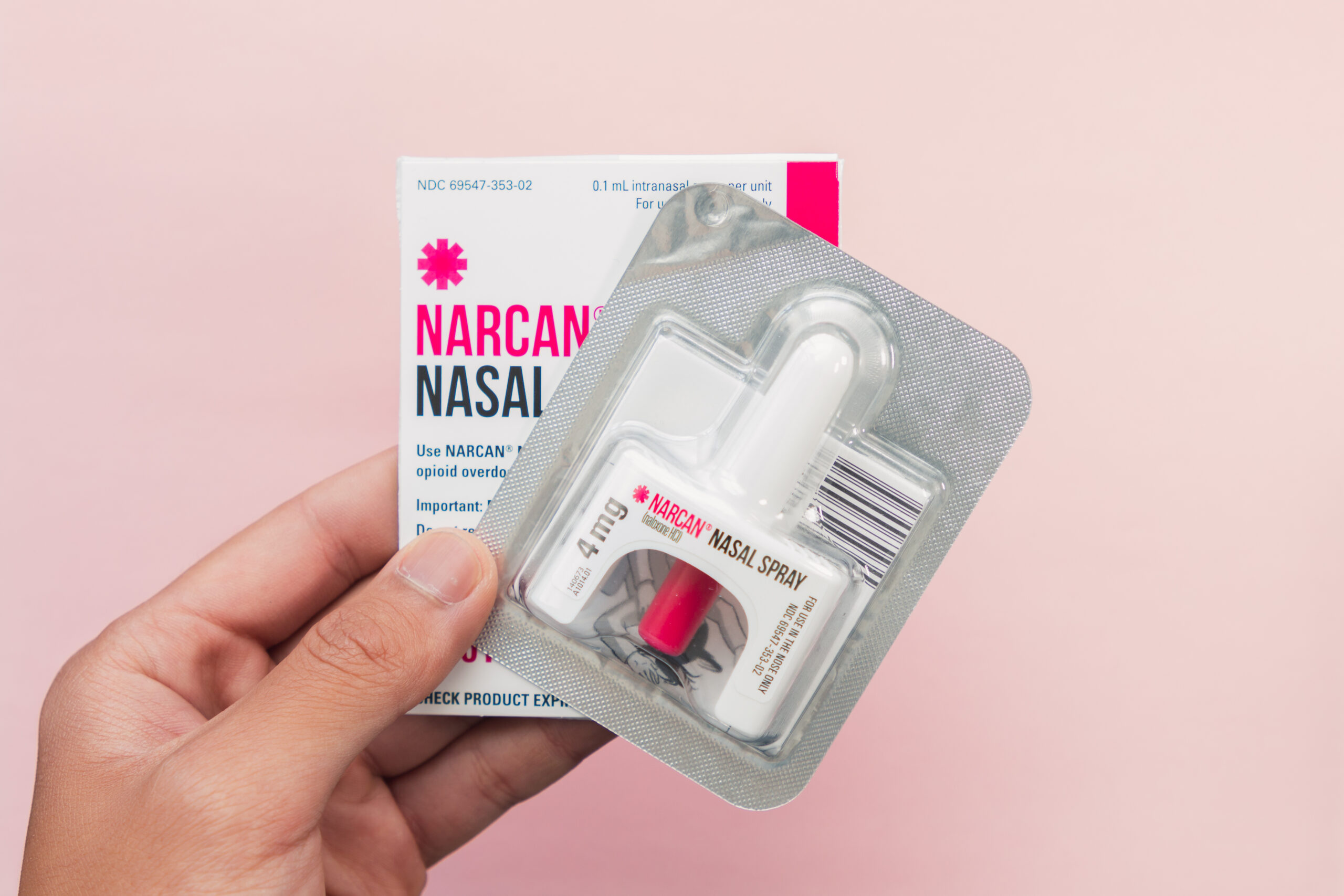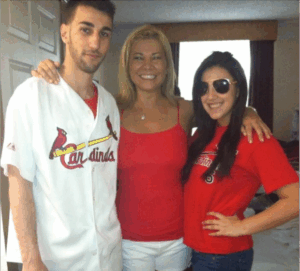Expert Contributions From: Chief Tom Synan, Newtown Police Chief & Founding Member, Hamilton County Addiction Response Coalition and Gilbert Schmidt, State Medical Director, BrightView
Each day in the United States, over 150 people die from overdoses involving synthetic opioids like fentanyl, according to the CDC. Behind that staggering number are parents, siblings, children, friends — each with a story left unfinished. Overdose doesn’t just take lives; it leaves families reeling and communities searching for answers.
At BrightView, we believe awareness is the first step toward prevention. That’s why we’re sharing what you need to know about overdose risk factors, warning signs, and how you can help save a life.
The Rising Risk of Overdose
Dr. Gilbert Schmidt, a state medical director at BrightView, describes addiction as a “chronic, relapsing, and all too often fatal disease.” And the risks today are more dangerous than ever.
Illicit drugs are increasingly contaminated with fentanyl — a synthetic opioid 50 times more potent than heroin. That means one lapse, one party pill, one wrong assumption can be deadly. As Dr. Schmidt puts it:
“Any relapse can be incredibly dangerous. The first-time use can be the last-time use.”
Addiction rewires the brain’s decision-making centers. When combined with stigma, isolation, and an unpredictable drug supply, the results can be devastating — even for someone in long-term recovery.
You Can’t Treat What You Don’t Understand
“We were taught in the academy — if someone uses drugs, they’re a criminal. You arrest them. But we started seeing 50 to 70 overdoses a week. You couldn’t ignore it anymore,” says Chief Tom Synan, Newtown Police.
As a first responder, Chief Synan has seen addiction devastate individuals, families, and neighborhoods. He’s also watched recovery transform lives. The shift, he says, came when law enforcement stopped asking, “How do we punish?” and started asking, “How do we connect people to care?”
“This is a chronic medical condition. You don’t arrest your way out of addiction — you treat your way out.”
The New Reality: Risk Factors Have Changed
It used to be that overdose was primarily linked to heroin or high doses of prescription pills. Today, it’s more unpredictable — and more dangerous.
“One of the biggest misconceptions,” says Chief Synan, “is that people choose addiction. They don’t. And they’re not choosing what’s in their drugs either. Fentanyl is everywhere — in cocaine, fake pills, even marijuana in some cases. Users don’t know what they’re getting.”
Overdoses don’t always happen to people in “the depths” of addiction. Many occur during moments of vulnerability. Key risk factors include:
- Reduced tolerance after detox or incarceration
- Mixing substances, like opioids and benzodiazepines
- Mental health issues, including depression or trauma
- Fentanyl contamination in non-opioid drugs (e.g., cocaine, counterfeit pills)
- Lack of support or medical care during early recovery
In Dr. Schmidt’s words:
“Addiction isn’t a choice. By the time someone is in active use, brain chemistry and decision-making are no longer normal.
Why Medication Matters — and Isn’t “Trading One Drug for Another”
Medication-assisted treatment (MAT) is one of the most effective tools in preventing overdose and supporting recovery. Yet, it remains misunderstood.
“The medications we provide are legal, safe, and monitored. They give people space to rebuild their lives,” says Dr. Schmidt. “This isn’t trading one drug for another. It’s treating a chronic illness the way we’d treat diabetes or hypertension.”
MAT reduces cravings, eases withdrawal, and helps people focus on the behavioral and lifestyle changes essential for long-term recovery.
Addiction Affects the Whole Family
Overdose doesn’t only impact the person using drugs — it devastates families. Katina lost her brother Peter to an overdose. Her story is heartbreaking, raw, and familiar to too many:
“I witnessed my brother overdose as a teen. I didn’t know what to do. I put him in the shower, tried to make him throw up. He turned blue. We didn’t call anyone because we were scared — scared he’d be arrested, scared my parents would be mad. I still carry that moment with me.”
Peter would survive that overdose — and later, even spend five years in recovery. Unfortunately, his final overdose came after using what he believed was cocaine. His mother found him, lifeless, with his hat still on. Toxicology would reveal his bloodstream contained over 95% fentanyl.
“There wouldn’t have been a chance. We could’ve stood there with six Narcans, and it wouldn’t have brought him back,” she said. “He thought he was buying cocaine. But there is no such thing as a pure substance anymore.”
Even years after Peter’s death, Katina still struggles with grief and guilt. She also fights to protect Peter’s son, Danny — doing everything she can to help him grow up healthy, informed, and free from the shadow of addiction.
“Addiction changed our whole family. But it doesn’t define us. And I’ll never stop making Peter proud.”
Signs of Overdose: What to Look For
Recognizing an overdose quickly can save a life. If you notice any of these signs, call 911 immediately and administer Naloxone (Narcan) if available.
Signs of a Fentanyl or Heroin overdose:
- Slow, shallow, or stopped breathing
- Pinpoint pupils
- Blue lips or fingernails
- Cold, clammy skin
- Limp body or unresponsiveness
- Extreme drowsiness or sedation
- Confusion or disorientation
If you’re not sure, don’t wait. Narcan won’t harm someone if they’re not overdosing – but not acting in time could cost them their life.
What Harm Reduction Really Means
“Some people think Narcan just lets people keep using,” says Missy Adams, a Peer Support Specialist at BrightView. “But it gives someone’s mom, dad, child another chance at life. That’s what matters.”
Missy has responded to overdoses — including one that happened in the BrightView office. “The training kicked in. Staff administered Narcan, called 911, and got her to the hospital. She lived because we were ready.”
Missy’s teenage children are trained to use Narcan. She carries it in her purse and car. “You never know when you’ll need it — at Walmart, at the park, anywhere.”
Chief Synan agrees:
“We’ve seen a 50% reduction in overdose deaths in our area since 2017. The biggest change? Narcan. Fentanyl test strips. Harm reduction works. And it’s not enabling — it’s keeping people alive long enough to get help.”
Why Treatment — Not Jail — Saves Lives
“We used to think jail was the solution,” says Chief Synan. “But people came out worse. When we connect someone to care instead, they get housing, jobs, their family back. That’s real crime prevention.”
Dr. Gilbert Schmidt, a medical director at BrightView, reinforces this idea.
“Addiction isn’t a moral failing — it’s a disease. Medication-assisted treatment helps stabilize the brain and body so people can start to heal. Without it, the risk of overdose and relapse skyrockets.”
At BrightView, patients receive same-day access to:
- Suboxone and other evidence-based medications
- Therapy and peer support
- Case management for housing, transportation, and job support
It’s not just treatment — it’s transformation.
What Gives Us Hope
“I never thought I’d be 10 years in recovery,” Missy says. “Back then, I didn’t want to be sober for even one day. But now I have peace. And I want others to feel that too.”
“What gives me hope,” says Chief Synan, “is seeing our community come together. We used to be siloed. Now we have over 1,200 people and 250 organizations working together. That infrastructure — that legacy — will keep saving lives long after I’m gone.”
If You’ve Lost Someone
If you’ve lost a loved one to overdose, your grief is real — and your person mattered.
“We recognize their life had purpose,” Chief Synan says. “And when we show support to those who grieve, we’re saying their memory matters — to us all.”
Prevention Is a Shared Responsibility
What can you do to prevent overdose? Start with awareness, compassion, and action:
- Carry Narcan. It’s available at most pharmacies and community centers.
- Have the conversation. Talk with your kids, friends, and loved ones — early and often.
- Support, don’t shame. Stigma prevents people from asking for help.
- Know the signs. Quick recognition and response saves lives.
- Seek professional treatment. BrightView offers same-day access, medication, therapy, and case management.
“We don’t make people do anything,” says Dr. Schmidt. “We open the door to recovery — but they have to choose to walk through it. And when they do, we’re with them every step of the way.”
There’s Always Hope
At BrightView, we see recovery happen every day — and not just survival, but transformation.
“I used to say that recovery helps you get back to who you were,” says Dr. Schmidt. “But that’s not true. People in recovery become better versions of themselves than they ever imagined.”
You may not be able to save everyone. But you can help someone choose recovery. You can carry Narcan. You can learn the signs. You can be the reason someone lives.
“We don’t want people to use,” Missy said, “but if they do, we want them to stay alive. And recovery? It’s always possible.”
Watch the Documentary: Addiction Ultimatum
If you want to understand the full impact of addiction — and the strength it takes to overcome it — don’t miss BrightView’s short documentary:
Addiction Ultimatum: Jail, Death, Recovery Real stories. Real loss. Real hope.
If you or someone you love is struggling, BrightView can help you reset and stay on track. Call us anytime at 888-501-9865 or visit brightviewhealth.com to get started.


